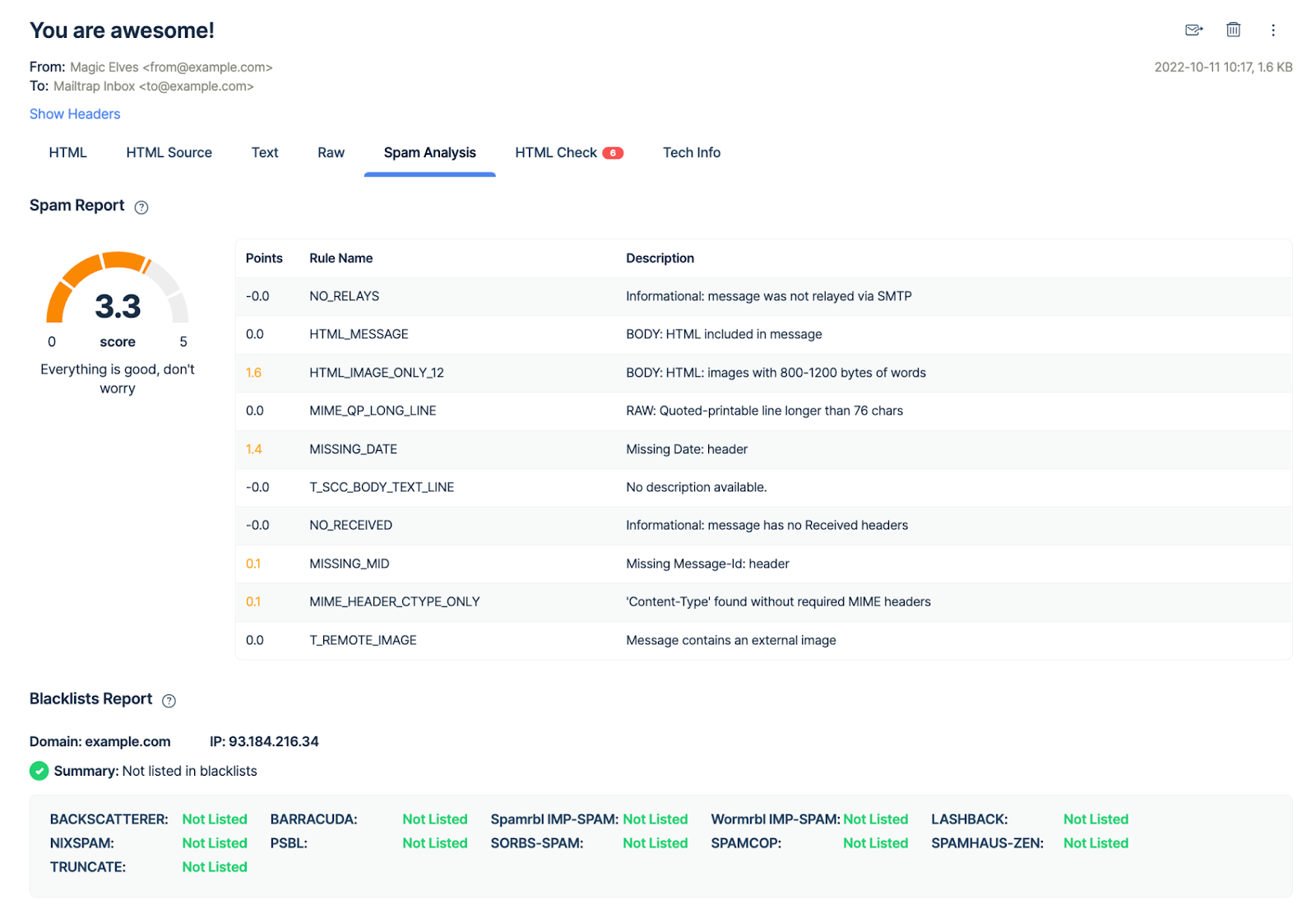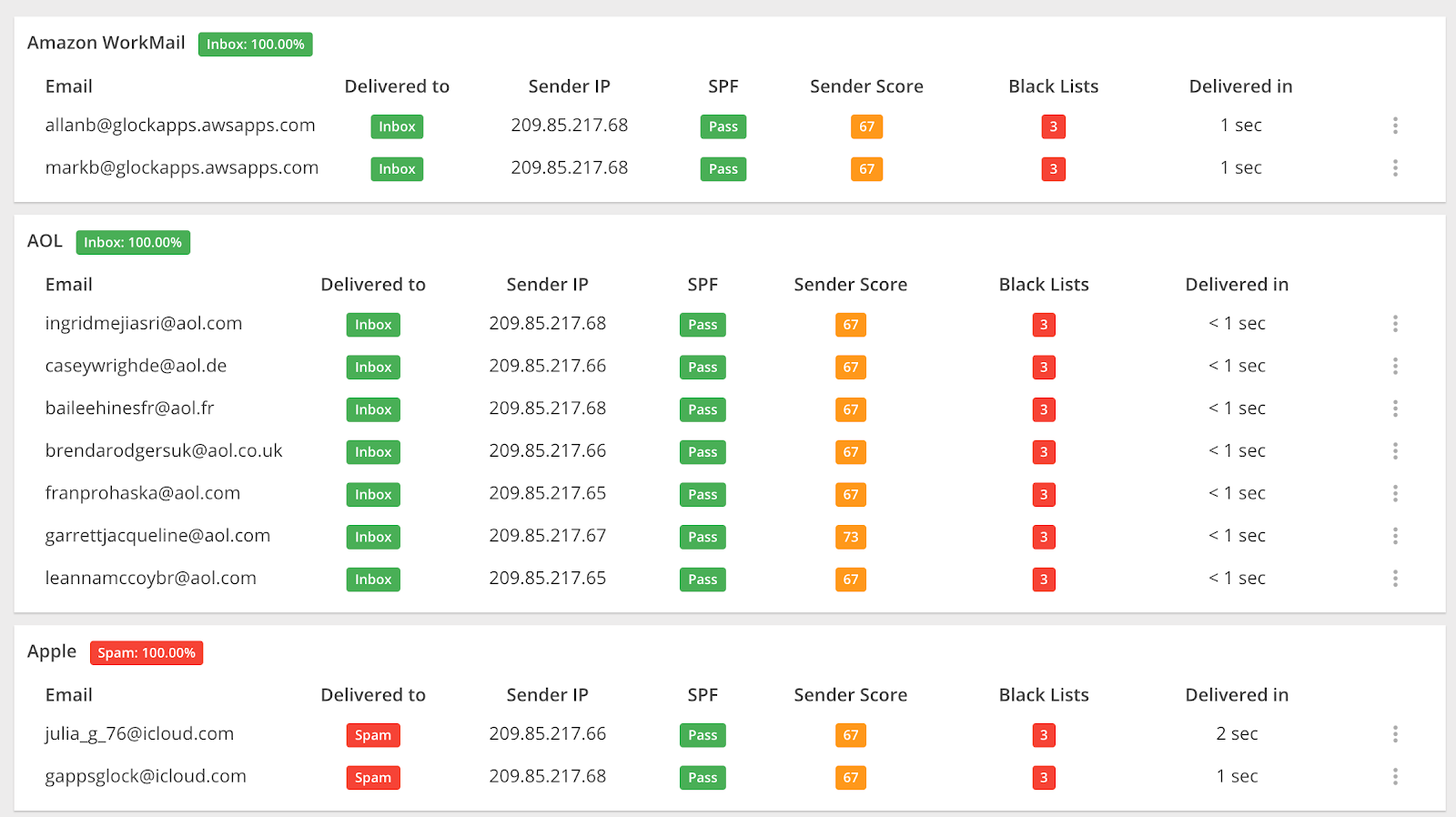At some point, we all have been affected by our emails landing in spam or even skipping an inbox. Many clients have been lost this way, many users have looked elsewhere, disappointed. Was there a way to prevent it? Absolutely, there are many ways to improve your deliverability. You likely implemented quite a few already. Does it mean you’re ready to send that next crucial campaign? Hold your horses. Let’s do a proper email deliverability test first.
Deliverability vs Delivery
Before we show you our favorite options for testing deliverability, it’s important we’re all on the same page in terms of definitions. After all, these terms are frequently confused and while they’re inevitably connected, you can be great at one and really struggle with another.
Email Delivery refers to whether a recipient’s server accepted your email or not. If it did, it’s still not certain where a message ended up but it already counts as a positive result in a frequently seen ‘Delivery Rate’. If a message bounces for any reason (incorrect email address, the domain doesn’t exist, attachments are too heavy, etc), it counts as a failed delivery and you’re immediately notified of it with an all-time favorite email message.

Email Deliverability, on the other hand, is about whether an email was delivered right into the recipient’s inbox or straight to their spam folder. For that reason, deliverability is often referred to as Inbox Placement. Here, a number of factors such as sender reputation, authentications or quality of content matter when automatic filters decide which way your email shall go.
In this article, we’re going to show you four excellent tools for measuring your deliverability. It’s only a small part of our Email Testing Checklist that also covers things like SMTP server testing, sending test emails and examining content to make emails more deliverable.
Mailtrap Email Testing

An inseparable part of the Mailtrap Email Delivery Platform, Email Testing is a safe environment to inspect and debug emails in staging before they are sent to recipients. You can quickly validate your email’s HTML/CSS, check how emails render across different devices, and review raw email data.
On top of that, Email Testing provides you with a spam score of your messages. If you keep this score below 5, you effectively solve a significant number of potential deliverability issues.

With Email Testing you can take advantage of multiple inboxes for testing and message forwarding without accumulating all the “dev-junk-emails” in your mailbox that affects your domain reputation.
Moreover, you can test your email templates with our API and then easily switch from staging to production environment once you’re ready to start sending. All you have to do is enable sandbox and specify the inbox ID to receive template test, and then send it through the API in the production environment.

Mail-tester.com

There’s little reason not to love their homepage. And this is only the start. Mail-tester.com is a freemium tool for analyzing specific emails and their content. You only have one job – to send an email to an individual account you see on the screen and hit the button. If you’re sending from an email client, it’s obvious how to do it. You can also test emails this way with popular Email Sending Platforms such as MailChimp or Sendinblue. When previewing a campaign, you can send a test email to a specified address. Choose the one you see on your Mail-tester.com homepage.

Disclaimer: None of us actually wrote this email. It comes from the latest Kenya Airways newsletter so kudos to them.
In a few seconds after you send an email, you have a score ready. Mail-tester looks into various factors that affect deliverability. It checks the likelihood of it going to spam and gives tips on what to improve. It analyzes your domain for most popular authentication methods and reads the HTML code of your message, continuously looking for things to improve. Finally, it checks if your domain made it to some blacklist recently which might affect your odds. Looks like we failed a little bit here.
Mail-tester.com provides a free option for testing your emails, as well as a premium service that lets you integrate Mail-tester into your app (as testing dozens of email at once could be difficult). See the pricing page for details.
Spamcheck by Postmark

Spamcheck is another email testing option from the popular email delivery provider, Postmark. As we mention in our guide to transactional email services, Postmark boasts one of the best delivery rates on the market, even if it comes at a cost. They also offer this free tool for testing email deliverability.
Spamcheck is easy to use. You simply paste your email’s HTML code into the dialog box, along with all the headers. You’ll get back a score in just seconds; the lower, the better. And you will get comments about how to improve the email, addressing:
- The quality of links in the content
- Authentications of the sender domain
- Text to image ratio (certain proportions trigger spam filters)
- The general quality of HTML
Like Mail-Tester, Spam Check uses the popular SpamAssassin open-source tool to provide its assessment, so you can assume it’s reliable.

Postmark also allows you to integrate Spamcheck into your app and automatically run spam checks on all outgoing emails. For this purpose, they offer their API for free (even if you don’t use Postmark to send your emails). Libraries for integrating with Perl, C#, Ruby, Python, and others are also available.
GlockApps

Another tool that lets you analyze your emails– and without even having to register– is GlockApps. To try this tool, you can send your email to an address displayed on the homepage and get back the results in a few seconds.
GlockApps emulates email-sending through Postfix and two other platforms for sending emails. It then estimates where your email would land. As you can see, spam is not the only potential problem. Our seemingly well-written and formatted email would skip most of the inboxes if sent with Mailgun. Lots of Gmail users would probably miss it too, because it would get buried under other promotions.
The true power of GlockApps is buried in the full reports available after registering (only the first three are free). Follow the instructions on the screen to send your test email to a carefully crafted list of recipients:

If everything went smoothly, in a few seconds you should see your report:


You see lots of useful stats known already from the previous tools. Since you sent an email to dozens of different domains spread between countries, you can also see how each performed. It’s especially useful when you know which accounts the majority of your contacts use. You can then predict how their clients will react when exactly this message arrives, this time to a real inbox.
SendForensics

And then, there’s SendForensics, also known for detailed reports on email deliverability. When you sign up, you’ll be assigned an individual account that you can send emails to. It’s not tied to the address you signed up with. As a matter of fact, your entire company can start sending emails to it right away.

SendForensics compares your results with those of thousands of other companies using their service. It then tells you where you rank and in which fields you should improve.
There’s a lot of additional data available in the paid plans. This involves a detailed analysis of content that even includes suggestions of words to use. Deep insights into reputation, inbox placement and even an option to preview emails for popular email clients are also available.
Sender Score
Another tool worth having a look at is Sender Score. It doesn’t take into consideration as many factors as its predecessors do, but it looks into probably the most important ones.
Right from their homepage, you can get basic data about your domain.

Sign up and you’ll see also the ratings from the IP addresses you use for sending as well as for related domains. This score is one of the key things spam filters take into consideration when assessing whether an email should be admitted.
Sender Score doesn’t give you any tips on how to improve the score and it’s also far from trivial. It sometimes takes years to build a good Sender Score from scratch. Of course, when sending via an ESP, you use their domain rating, not yours.

MX Toolbox
Authentications play a significant role in email deliverability. MX Toolbox offers various tools aimed at helping improve the domains’ capabilities. One of them is aimed strictly at validating a domain’s authentication methods.
All you need to do is send a test email to ping@tools.mxtoolbox.com. In a few minutes you’ll receive an email with a link to your report.

Here, you can verify if your domain has the necessary authentications and if they’re configured properly.

Other options worth a consideration
These were only some of the available tools for testing deliverability, yet they are the best ones in our opinion. By all means, you can combine several of them in your testing environment. After all, each looks at deliverability from a slightly different perspective.
Many Email Sending Providers (ESP) also offer various features for testing deliverability. It’s worth mentioning here Mailgun, Sendinblue and, of course, Postmark that we already talked about. These tools are built into their respective platforms so are not recommended as stand-alone tools. They are, however, a great supplement to some of the best tools on the market for sending emails.
Don’t forget to check our Email Testing Checklist where you’ll find 32 other excellent tools for testing emails. Also follow our blog to get the latest on email testing and deliverability.



Comments
2 replies